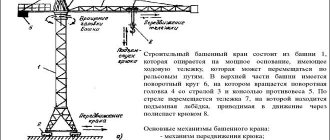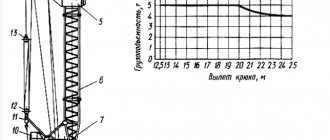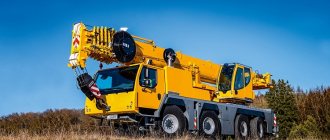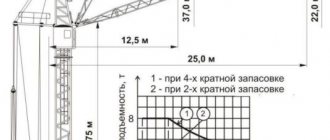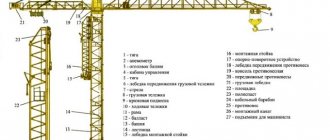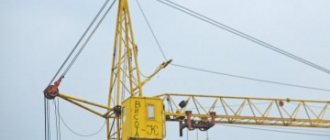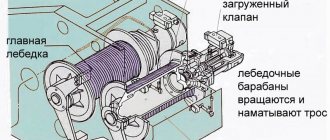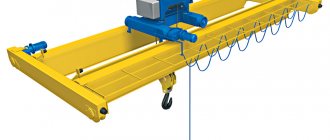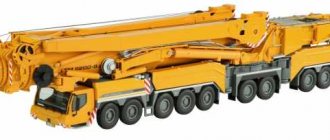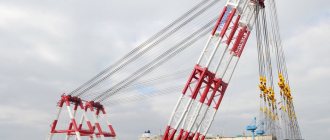Specialized training centers provide training for the excavator profession. To obtain a license for an excavator, you must not only master the principles of operating a technical device, but also have knowledge of the maintenance and repair of the base machine and its attachments, have the skills of a mechanic, be able to read drawings and diagrams of parts, and even understand the categories of soil.
The prestige of a profession is determined by its demand in the labor market. Excavators are in high demand. This special equipment is indispensable in the development of mine workings, quarries, and in the field of civil and road construction. Machines equipped with a bucket are used for digging trenches and pits or creating embankments and dumps, excavating soil or constructing dams. The machines are used not only for the extraction of iron ore, coal and other rocks, but also as loaders of bulk materials into vehicles.
A professional excavator operator is always provided with work and a stable income. And everyone with an excavator license can improve their rank over time by taking advanced training courses. The maximum professional level is 8th category.
How to operate an excavator
Excavators can be universal, mine and quarry, wheeled and tracked, cyclic (single-bucket) and continuous (multi-bucket). But the principle of operation on an excavator is the same for all types of machines: a rotary bucket scoops up soil, transfers it to the required distance or height and pours it out.
The control of a foreign-made and domestic-made excavator will be different.
Imported models have a control panel, which displays all information about the status and parameters of the machine, and 2 joysticks (for moving the vehicle and manipulating the bucket and other attachments). In this case, it is necessary to take into account the model and manufacturer of the equipment, since, as a rule, individual control schemes are used. You may have to learn how to operate each model separately.
In order to have control practice and master driving an excavator, computer simulation programs have been developed for beginners. Such virtual models of excavators teach you how to operate front and backhoes and a clamshell bucket, reload bulk materials, and give you the opportunity to practice changing working equipment.
Russian-assembled excavators are equipped with hydraulic valves, which are connected to the bucket control mechanism and hydraulic cylinders of the boom manipulator. All actions require physical effort from the excavator operator, since the cabin of the tracked vehicle has 2 pedals and levers, and models with a pneumatic chassis have a steering wheel. Even those who know how to drive a car of any class will have to learn to become an excavator operator and gain the right to drive special equipment.
The theoretical training course lasts several months, followed by practice, where they learn in detail how to properly operate an excavator. After completing the course, acquiring operational and management skills, and passing exams, a certificate is issued, which indicates the operating category and category of the technical equipment.
Tower crane structure
Essential elements:
- tower;
- working boom;
- support part;
- slewing support;
- control cabin;
- working devices (winches, blocks, pulley ropes, etc.).
Cranes are indispensable in the construction of buildings and structures.
The supporting part consists of supports and a counterweight that prevents the structure from tipping over. The counterweight consists of reinforced concrete blocks weighing 1 ton or more. The slewing bearing carries electrical communications, and winches and cargo trolleys are also installed on it. Its main function is to transfer loads to the non-rotating part and ensure rotation of the turntable. The tower and boom are the largest metal structures that allow you to lift and move cargo. They are manufactured in such a way as to minimize the wind load and, consequently, the risk of capsizing.
The cabin contains all controls and provides the operator with comfortable working conditions.
What licenses are needed for an excavator?
For special equipment on tracks or wheels, special categories of rights have been developed:
- B - gives permission to operate small tracked vehicles with a power of up to 25.7 kW;
- C - for specialized wheeled vehicles with power up to 110.3 kW;
- D - suitable for controlling powerful wheeled special equipment (over 110.3 kW);
- E - for controlling powerful tracked vehicles (more than 25.7 kW);
- F - designed to control special-purpose agricultural machinery.
To obtain an excavator operator’s license for a particular model, you need to compare the category and power of the machine you will be working on.
Many enterprises in the construction, public utilities or agricultural sectors willingly employ drivers who have only one special category. But those companies that strive to achieve greater operational efficiency are willing to accommodate those who want to study to become excavator operators. A competent employer understands that the interchangeability of specialists is the key to stable work.
Those who want to study and receive an additional category should take into account that when transferring from one type of machine to another, the training will take place within the framework of an additional shortened program. Certification will be required.
If the enterprise plans to transfer the driver from one model of excavator to another of the same type, then no additional training is required. In such a situation, the excavator operator must familiarize himself with the features of the proposed special equipment, undergo an internship for 5-8 shifts, and only after that begin independent work.
Preparatory work
To properly understand how a crane is assembled on a construction site, you need to familiarize yourself with its design. So, how does a crane appear on a construction site? Due to its heavy weight, this special equipment is delivered to the construction site in a disassembled state. Each part is assembled on site, on a previously prepared site.
The design of a standard tower crane includes the following elements:
- A tower resting on a strong and powerful base, equipped with a running trolley capable of moving along rail tracks.
- Cabin for the crane operator.
- Console for counterweight.
- The lifting mechanism is a boom.
A tower crane has several important mechanisms responsible for moving the hook, rotating the tower head, moving the trolley, and raising and lowering the hook. Before a tower crane is erected for construction work, the site must be prepared.
- First of all, the site is leveled, and the site is additionally concreted to ensure stability.
- At the next stage, grounding is carried out and the electrical network is connected to the construction site.
To install a tower crane, a truck crane is usually used, which must be delivered to the work site in the most convenient and thoughtful way.
Where to train to become an excavator operator
Study programs to become an excavator operator were developed by the State Committee of the Russian Federation for Vocational Education. Now they are approved by regulations of the Ministry of Education.
Now you can learn to be an excavator operator or a forklift driver not only in vocational schools, but also in training centers and manufacturing plants.
All educational institutions that teach how to operate an excavator must have an appropriate production base for conducting practical training. The practical part of the exam must take place at a tractor track and on a specially prepared route.
Education
Persons who have reached the age of 18 and have no medical contraindications for study and further work are allowed to study the profession of an excavator. A medical certificate according to the established sample is issued on a paid basis. You must also present a certificate of payment of tax (state duty established by state technical supervision authorities).
Vocational training is carried out full-time and should include:
- theoretical classes in specially equipped classrooms;
- practical lessons;
- examination events with the participation of Gostekhnadzor inspectors.
Training programs for drivers of wheeled and tracked vehicles are drawn up taking into account the fact that, in addition to the skills of operating special equipment, the graduate will also acquire knowledge of vehicle maintenance and repair.
An excavator operator must be able to detect and troubleshoot problems, understand the operating principle of equipment, understand drawings, fuels and lubricants and their consumption rates, and know the basics of electrical engineering.
All this knowledge at the end of the course is checked by a certification commission, which must include a representative of Gostekhnadzor. The result of the certification is entered into the protocol. The excavator operator receives a certificate indicating the type of machine he is authorized to operate. The certificate is signed by the chairman of the examination committee.
In training centers, the course of study is designed for 300 or more academic hours and lasts from 2 to 4 months. The price is set by the centers themselves; in most educational institutions, obtaining the profession of an excavator operator costs about 7 thousand rubles, each subsequent increase in grade costs about 2.5 thousand rubles.
Increase in rank
After receiving a certificate, an excavator operator who has completed training for the first time has the right to operate a single-bucket machine with a volume of no more than 0.15 m³, since he is assigned a 4th category. To increase the rank, you will need to undergo training according to a shortened curriculum and pass an exam. Training for each higher level can be completed after a year of work with the previous qualification.
Increasing the rank indicates the professionalism of the driver. All categories and salaries of specialists are included in the unified tariff and qualification directory of jobs and professions. With each rank, wages increase, and the excavator operator receives permission to operate a more powerful machine in terms of bucket volume and productivity:
- 5th category - allows you to work with a bucket volume of up to 0.4 m³ and on trench rotary excavators with a productivity of up to 1000 m³/h;
- 6th category - bucket up to 1.25 m³, productivity - up to 2500 m³/h;
- 7th category - volume up to 4 m³, productivity up to 4500 m³/h;
- 8th category - volume up to 9 m³, productivity more than 4500 m³/h.
Powerful excavators are necessary in the mining industry, they are used in open-pit mines and coal mines. To work on such a giant, a driver needs professional education (courses will not be enough); he often works in tandem with an assistant, and a team of specialists handles the maintenance of large equipment.
Introduction
In ancient times, the only lifting means were rope and the physical strength of people, which is probably why builders could not boast of erecting high-rise buildings.
Nowadays, modern technology is used on construction sites, which allows construction to be carried out in short lines and buildings of any height to be erected. It is difficult to imagine even a single construction job without a tower crane; such cranes differ in lifting capacity, height and many other indicators.
Today, many crane manufacturers present their lifting devices to consumers. Among them, potain cranes are considered quite popular, which are actively used by many construction companies.
Useful tips
Before starting work, you need to study all the icons on the body and units of each excavator. Graphics and labels contain cautions, warnings, and danger signals. The signs are intended as a visual reminder, but should not be confused with safety instructions, which must be followed.
Initial briefing (introductory) is carried out upon hiring, repeated - at least once a quarter. In some situations, an extraordinary briefing is carried out (the driver switches to another model of special equipment, he has been issued a permit for hazardous work, he has violated safety rules or caused an accident, etc.). TB specialists record information about the training.
To ensure safe work, young excavator operators must always follow the rules and listen to the advice of experienced colleagues. Among the mandatory ones are simple but extremely important recommendations:
- Before starting work, the excavator operator must sound a sound signal. This way, nearby colleagues will be warned that the car is starting to move.
- The working area of the excavator should be fenced off whenever possible. The operator must keep an eye on the job site and clear space while rotating the bucket.
- If you have to work on a slope or loose soil, you must first prepare a hard horizontal surface to prevent the equipment from tipping over.
- Before starting work, you need to study the area. Working near power lines or where underground utilities are located is dangerous.
With time and increasing professional experience, compliance with safety rules at work can be brought to automaticity. But experienced excavator operators are advised to repeat the safety rules from time to time and become familiar with those developed for modernized models of special equipment.
Preparation
Tower cranes are brought to the construction site in disassembled form, then workers assemble them on site. The structures are heavy, so the site must be prepared before installation.
The mechanism consists of the following parts:
- Tower.
- Cabin designed for the driver.
- Console. It is necessary for counterbalance.
- Arrow. Load-lifting mechanism.
First, the place where the unit will stand is leveled. To make the structure more stable, the surface is filled with concrete. Grounding is required and electricity is supplied to the site.
You can install a construction crane using a truck crane, but it must be delivered to the site. Convenient access routes to the construction site should be determined in advance.
Driver's responsibilities
A trained and certified excavator driver must perform the following functions:
- carry out the development and movement of soil during various types of construction and open-pit mining;
- Perform timely maintenance of the excavator: refill with fuel and lubricating oils;
- regularly monitor the operation of the chassis system elements;
- periodically inspect the working components of the machine: ropes, engine, brake systems and their fastenings;
- systematically monitor the readings of measuring instruments;
- carry out preventive measures and carry out repair work;
- maintain approved technical documentation.
Personal observations
Once upon a time I was interested in how tower cranes are assembled for the construction of tall buildings. One fine day, while walking around a construction site with a camera, I accidentally witnessed this process and took some photographs.
It turned out that the crane assembles itself. Using third-party equipment, only the foundation of the crane and its top are installed. The rest is better seen in pictures than in words.
1. The foundation with the lower part of the tower (in this photo 3 or 4 sections of the tower are already attached to it) is temporarily connected to the upper part (with the cabin and boom) using an assembly device. Here, the next section of the tower stands in the assembly device, ready for installation, and the crane holds another section on the boom as a counterweight until its upper part is rigidly fixed to the base.
2. The assembly device is equipped with jacks, it is slightly wider than the crane tower and can be moved upward along it. In this photo, compared to the previous one, it has already risen to the height of one section of the tower, creating a place inside itself for mounting this section.
3. Three men “with the help of a sledgehammer and some mother” push the tower section into place and secure it.
4. Now the section that was used as a counterweight can be placed on the assembly device.
5. And take the next section, which will be used as a counterweight in the next step.
6. And then begins a fairy tale about a priest who had a dog. In this photo the crane is in exactly the same condition as in the first photo, but one more section higher. And everything is repeated according to the same algorithm.
7. The assembly device rises up the tower again.
8. Again, three men “with the help of a sledgehammer and some mother” push the next section of the tower into place.
9. And the crane became one more section higher. I didn’t take pictures of another iteration of the cycle, I was tired of it.
